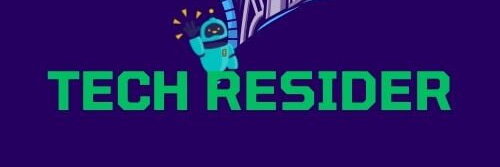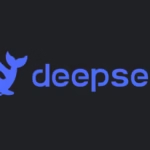DeepSeek V3.1: Ushering in a New Era for AI Agents
The recent release of DeepSeek V3.1 has sent waves through the global AI community, cementing its status as the most significant advancement in open-source artificial intelligence this year. Developed by the innovative team at DeepSeek, this model is setting a new standard for AI agents, combining powerful neural architecture with uniquely practical features that address modern, real-world challenges.
Breaking Boundaries with Hybrid Reasoning
One of DeepSeek V3.1’s headline breakthroughs is its hybrid reasoning approach, referred to as “Think & Non-Think” inference. This allows the AI to nimbly switch between deep, step-by-step reasoning (perfect for analytical or technical tasks) and instantaneous, direct responses when speed matters. This flexibility makes V3.1 effective in a wide range of scenarios—from casual Q&A to solving tough analytical problems. Many experts view this as the first true step toward the autonomous AI agent era, where machines can independently handle complex workflows.
Agentic Capabilities and Multitasking
DeepSeek V3.1 has been specifically trained to excel at tasks that require multi-step tool use and integration. It connects seamlessly with APIs, executes code, and even performs real-time web searches to augment its knowledge on demand. For anyone building AI-driven services, this translates to smart agents capable of juggling multiple subtasks, coordinating actions, and delivering far more robust automation.
Performance That Surpasses Rivals
In independent benchmarks, DeepSeek V3.1 has outshone other industry-leading models. On elite programming tests like Aider, it scored an impressive 71.6% pass rate, outperforming even Anthropic’s Claude Opus 4. Its combination of a massive 685 billion parameter neural network (using an efficient Mixture-of-Experts structure) allows it to deliver top-tier performance while requiring a fraction of the computational resources—up to 68 times more cost-efficient than key proprietary rivals.
Features for the Demanding User
Among its standout qualities is support for 128K token contexts, letting the model reference vast documents, entire codebases, or lengthy conversations in a single interaction. Hallucinations, or made-up information, have been slashed by 38% versus prior DeepSeek models, making V3.1 far more reliable. Its world-class multilingual abilities—particularly in Asian and low-resource languages—further distinguish it as a global solution.
Developer Friendly and Open
Best of all, DeepSeek V3.1 is fully open-source. The model’s weights and architecture are publicly available, leveling the playing field for researchers and developers worldwide. As organizations scramble to harness the next wave of AI, DeepSeek V3.1 stands out as the benchmark for trusted, agentic, and accessible artificial intelligence.
DeepSeek is a Chinese AI platform offering advanced open-source large language models (LLMs) for coding, mathematics, and reasoning tasks. Developed by Hangzhou-based this AI, a subsidiary of quantitative hedge fund High-Flyer, its models rival top-tier AI systems like OpenAI’s ChatGPT while operating at a fraction of the cost.
The platform gained global attention in January 2025 with its DeepSeek-R1 model, which matches OpenAI’s o1 in reasoning capabilities.
Key Features
- Open-source models: Free for commercial and research use, including code access.
- Advanced capabilities: Excels in coding (128K token context window), math problem-solving, and logical reasoning.
- Cost-effective API: Priced at $0.14 per million input tokens, significantly cheaper than competitors.
- Multi-platform access: Web interface, mobile apps, and API integration.
It’s cost-efficient AI models are transforming multiple industries by enabling advanced applications at reduced costs. Here are the sectors benefiting most significantly:
1. Healthcare
- Medical Imaging Analysis: Hospitals in Beijing, Shanghai, and Guangzhou use DeepSeek for early disease detection via CT scans, X-rays, and MRIs, improving diagnostic accuracy and patient outcomes.
- COVID-19 Management: Rapid analysis of chest CT scans helped track infections and allocate resources during the pandemic.
- Drug Discovery: Pharmaceutical firms like Fosun Pharma leverage DeepSeek to predict molecular interactions, accelerating R&D timelines.
2. Financial Services
- Fraud Detection: Banks like ICBC and China Construction Bank deploy DeepSeek to flag suspicious transactions, saving millions annually.
- Market Analysis: AI-driven trend prediction aids investment strategies and risk management.
3. IT & Enterprise Solutions
- Productivity Gains: Indian IT firms (TCS, Infosys) use DeepSeek to streamline operations and reduce costs through AI automation.
- Agentic AI: Applications in customer service and supply chain management enhance efficiency for companies like Wipro.
4. E-Commerce
- Personalized Recommendations: Platforms like JD.com and Taobao boost sales by tailoring product suggestions using user behavior analysis.
5. Energy & Utilities
- Grid Optimization: State Grid Corporation of China employs DeepSeek to predict energy demand, preventing blackouts in high-density regions.
6. Smart Cities & Transportation
- Traffic Management: Cities like Shenzhen optimize traffic flow using real-time data from cameras and sensors.
- Autonomous Vehicles: BYD and NIO integrate DeepSeek for obstacle detection and navigation in self-driving cars.
7. Cybersecurity
- Threat Detection: Tencent and Huawei use DeepSeek to monitor networks and preempt breaches, blocking phishing attacks.
8. Education
- Personalized Learning: AI tailors educational content to individual student needs, improving engagement and outcomes.
9. Manufacturing
- Predictive Maintenance: Factories use DeepSeek to anticipate machinery failures, reducing downtime.
Key Drivers of Adoption
- Cost Efficiency: DeepSeek’s models cost 85% less than 2023 benchmarks, making AI viable for smaller enterprises.
- Open-Source Flexibility: Customizable models for niche applications (e.g., tiny language models for telecom).
Industries with high data-processing demands and cost sensitivity—healthcare, finance, IT, and urban infrastructure—are positioned to gain the most from this disruptive AI capabilities.
How to Use DeepSeek for Free
1. Mobile App (Simplest Method)
- Download the app from the iOS App Store or Google Play Store.
- Sign up with email or social media account.
- Use the chatbot interface for queries. Enable DeepThink (R1) mode for advanced reasoning tasks.
2. Web Interface
- Visit DeepSeek’s official website.
- Start chatting instantly without registration for basic use.
3. Local Installation (Advanced Users)
- Install Ollama, an open-source tool for running LLMs locally.
- Run
ollama run deepseek-r1in your terminal to download and use the R1 model.
4. API Integration
- Free tier available for developers, with paid tiers for high-volume usage
- Compatible with OpenAI’s API structure for easy integrationLimitations
- No image generation/analysis features
- Primarily supports English and Chinese
- Local installation requires technical expertise
DeepSeek’s rapid rise highlights its disruptive potential in democratizing AI access, offering enterprise-grade capabilities at minimal cost. Its open-source approach and mobile-first strategy have made it a popular alternative to proprietary models like ChatGPT
DeepSeek is reshaping the software industry through cost-efficient AI innovation and open-source accessibility, creating both disruption and opportunity. Here’s how:
1. Cost Revolution in AI Development
- 95% cost reduction compared to GPT-4, enabling small/mid-sized firms to deploy advanced AI
- $0.14/million tokens API pricing vs competitors’ $5-15 range
- Training costs slashed from $100M+ to under $6M for enterprise-grade models
2. Developer Productivity Surge
- DeepSeek Coder achieves 73.78% HumanEval score, outperforming most coding assistants
- 128K token context window handles entire codebases for complex projects
- Multi-language support (Python, Java, C++, etc.) with 87% code-trained models
# Example: Automated code generation with DeepSeek Coder
from transformers import AutoTokenizer, AutoModelForCausalLM
model = AutoModelForCausalLM.from_pretrained("deepseek-ai/deepseek-coder-33b")
# Generates complex functions from natural language prompts
3. Market Dynamics Shift
| Sector | Impact | Example |
|---|---|---|
| Chip Makers | Reduced demand for high-end GPUs | Nvidia shares dropped 8% |
| Cloud Providers | Increased adoption of cost-efficient AI | Microsoft Azure gains traction |
| Indian IT | New outsourcing opportunities | TCS/Infosys developing 100+ AI agents |
4. Open-Source Disruption
- Full model weights and training data publicly available
- 17-day App Store dominance over ChatGPT shows rapid adoption
- Forces proprietary models (GPT-4, Gemini) to accelerate innovation
5. New Business Models Emerge
- Agentic AI platforms enabling semi-autonomous software development
- AI-as-a-Service solutions at 1/10th historical costs
- Hybrid models combining 33B-parameter coding AI with human oversight
The software industry is experiencing its “Linux moment” with DeepSeek – while challenging incumbents like OpenAI and Nvidia, it empowers developers with enterprise-grade tools previously accessible only to tech giants. Indian IT firms and cost-conscious enterprises emerge as key beneficiaries, while the $500B Stargate Project faces relevance questions. This disruption accelerates AI democratization but intensifies competition in foundational model development.


